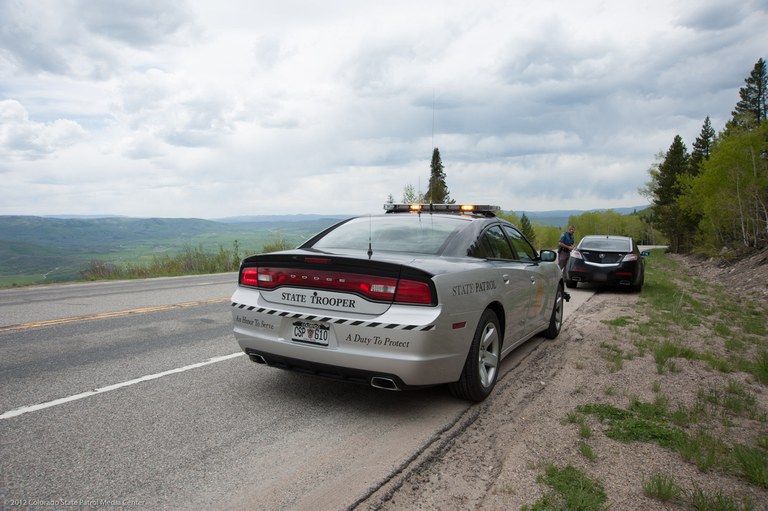CDOT receives grant from GHSA, Responsibility.org and NASID to combat drunk and drug-impaired driving in Colorado (GHSA)
Shift into Safe News
As summer driving season kicks off, three states receive funding to help law enforcement identify and remove impaired drivers from the road.
The Governors Highway Safety Association (GHSA), Responsibility.org and the National Alliance to Stop Impaired Driving (NASID) have awarded more than $86,000 to three states, including Colorado, for initiatives to combat alcohol, cannabis and multiple-substance impaired driving. Now in its 10th year, this long-running grant program has provided more than $1.1 million to State Highway Safety Offices (SHSOs) across the country to help address this growing roadway safety threat.
The grants will help SHSOs and criminal justice professionals in three states — Colorado, Idaho and Missouri — improve their ability to detect impaired drivers and remove them from the road in the following ways:
- Colorado: As Colorado works to detect all types of substances involved in impaired driving, more drivers are refusing to provide a breath or blood sample after DUI arrests. Refusing a toxicology sample is against Colorado’s Express Consent Law. CDOT and the Colorado Task Force on Drunk and Impaired Driving will use grant funding to achieve greater compliance with the law by raising awareness of the consequences of refusing a toxicological test.
-
Idaho: Drug Recognition Experts (DREs) — police officers trained to recognize drug impairment in drivers — play a crucial role in convicting drug-impaired drivers, a trend that is increasing in northern Idaho due to neighboring states legalizing cannabis and the rise in fentanyl/meth use. The Idaho Transportation Department Office of Highway Safety, in collaboration with the North Idaho DUI Task Force, is using grant funding to enhance the number of trained DRE officers and phlebotomists in the region. This will equip officers with skills to detect drug and multi-substance impaired drivers from roadways.
-
Missouri: Missouri’s Drug Recognition Program educates law enforcement officers on identifying and detecting impaired driving. Due to the rise of multi-substance impairment, program training now needs to include recognizing and detecting cannabis impairment. To address this need, the Missouri Department of Transportation’s Highway Safety and Traffic Division will partner with Extract-ED to organize and host “green labs” throughout the state. These events, where volunteers consume a controlled dose of cannabis and allow law enforcement to monitor the effects, help police learn to better recognize the signs of cannabis impairment. No state or federal funding will be utilized to purchase cannabis product for the consumers.
Memorial Day is the unofficial start of the summer travel season, but it’s also — unfortunately — a time when drunk driving rates rise, according to National Highway Traffic Safety Administration data. Overall, impaired driving and its tragic consequences have skyrocketed in recent years. Drunk driving deaths rose from 10,142 in 2019 to 13,524 in 2022. That’s a 33% increase in just three years. While total traffic fatalities were slightly lower (-1.7%) in 2022, drunk driving deaths fell at an even smaller pace (-0.7%).

Drug- and multiple substance-impaired driving is a growing safety concern as well. More than half (56%) of people injured or killed in crashes on U.S. roads tested positive for alcohol and/or drugs in toxicology screening during a study of trauma centers between 2019 and 2021. People were most likely to test positive for cannabis (25%), followed by alcohol (23%), stimulants (11%) and opioids (9%). A shocking 20% had two or more categories of drugs in their system. Giving law enforcement the tools, resources and training to better recognize drug and multiple-substance impairment will enable officers to identify and remove dangerous drivers from the road.
“Our law enforcement partners across the country are doing everything they can to address impaired driving and make our roads safer, but they face an incredible challenge and need our support,” said GHSA Chief Executive Officer Jonathan Adkins. “GHSA’s decade-long partnership with Responsibility.org and NASID helps provide law enforcement with the resources they need to identify impaired drivers, making our roads safer for everyone.”
GHSA, Responsibility.org and NASID expect to announce a fourth grant worth $28,750 this summer, which would bring the total awarded this year to $115,000. These projects implement recommendations in a GHSA report on high-risk impaired drivers, funded by Responsibility.org, and the NASID national strategic framework. NASID is a broad coalition of stakeholders established by Responsibility.org that includes GHSA and many other public and private sector organizations. Proven and innovative solutions to address alcohol-, drug- and multi-substance impaired driving will be discussed in detail at the 2024 NASID Conference, which will be held this November in the Washington, D.C. area.
“Impaired driving is an inexcusable crime that kills people on our roadways every day,” said Darrin Grondel, senior vice president of traffic safety for Responsibility.org and director of NASID. “We are honored to team up with GHSA for the 10th straight year to provide critical funding to help safeguard the lives of everyone on our roadways.”
